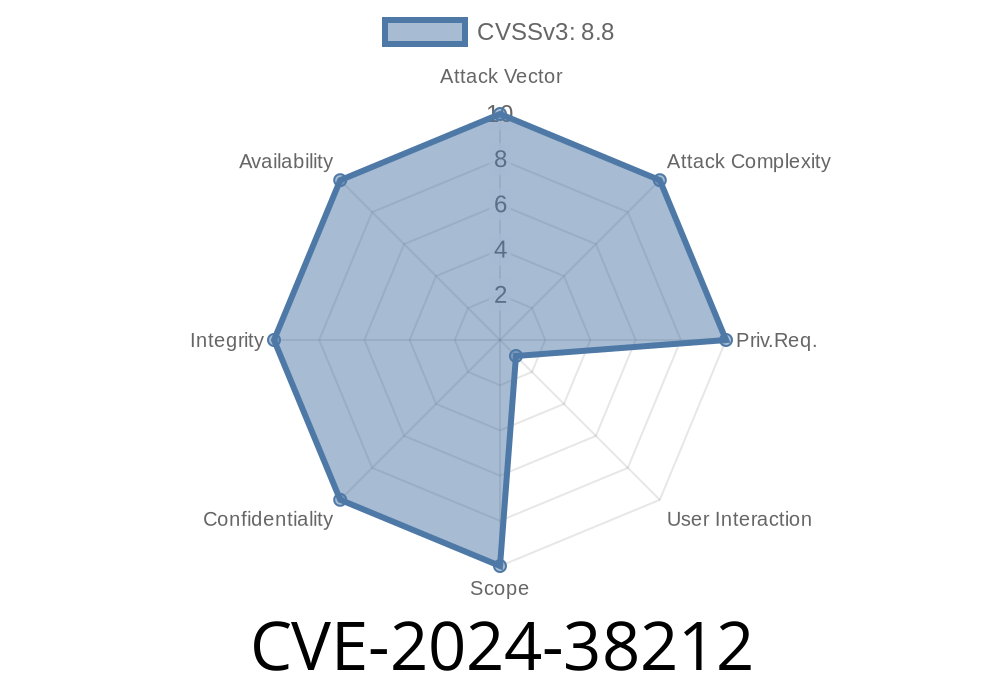In June 2024, a new critical vulnerability shocked Windows system administrators and security researchers: CVE-2024-38212. This security flaw affects the Windows Routing and Remote Access Service (RRAS) and could let attackers remotely execute code, potentially taking full control of a Windows server. In this post, I’ll break down how CVE-2024-38212 works, show code snippets for understanding potential exploitation, and give you original references to track official updates.
What is CVE-2024-38212?
CVE-2024-38212 is a remote code execution (RCE) vulnerability in the RRAS component of Windows Server. RRAS is commonly used for VPNs and routing on enterprise networks, exposing services directly to the internet or internal users. Microsoft rates this as critical because an unauthenticated attacker can trigger it by sending crafted network packets — no login required.
Windows Server 2022
Note: If RRAS is not enabled, the system is not affected.
How Does the Exploit Work?
The bug resides in how RRAS processes some network packets (details redacted by Microsoft for safety), allowing a buffer overflow or memory corruption. Here’s a conceptual breakdown of what happens:
Here’s a simplified (and safe) pseudo-code to help you visualize the vulnerability
import socket
# RRAS listens on various network ports, e.g., PPTP (1723), L2TP (1701)
target_host = "TARGET_SERVER_IP"
target_port = 1723
# This is just an example structure for a malicious packet
# The real exploit would need specific knowledge of the RRAS protocol
malicious_packet = b"X" * 500 # Overly-large payload to trigger overflow
sock = socket.socket(socket.AF_INET, socket.SOCK_STREAM)
sock.connect((target_host, target_port))
sock.send(malicious_packet)
sock.close()
> Disclaimer: This code will NOT work for real-world exploitation, but it shows the logic behind a typical buffer overflow attempt. Actual exploits require reverse engineering the RRAS protocol implementation.
Privileges: Attackers gain SYSTEM, the most powerful user.
- Network positioning: Because RRAS is commonly used as an entry point in VPNs, an exploit could serve as an initial foothold into corporate networks, leading to further lateral attacks.
Microsoft has released a patch fixing CVE-2024-38212
- Microsoft Security Update Guide — CVE-2024-38212
> Patch ASAP! Delaying increases risk, especially for servers exposed to the internet.
Microsoft Advisory:
CVE-2024-38212 Security Vulnerability Guidance
NIST NVD Entry:
BleepingComputer News Coverage:
‘Critical RCE Vulnerability Hits Windows RRAS Servers’
Conclusion
CVE-2024-38212 is a high-impact, low-complexity vulnerability. If you run RRAS on any Windows Server, patch immediately and audit network exposure. If you’re a security professional, keep your intrusion detection tuned for abnormal RRAS traffic.
Staying ahead of vulnerabilities like this is the best way to protect your infrastructure from devastating cyberattacks.
*Stay safe, patch up, and spread the word!*
*Written by an InfoSec enthusiast seeking to make cybersecurity simpler for everyone. For questions or corrections, leave a comment below!*
Timeline
Published on: 10/08/2024 18:15:07 UTC
Last modified on: 12/31/2024 23:09:14 UTC
